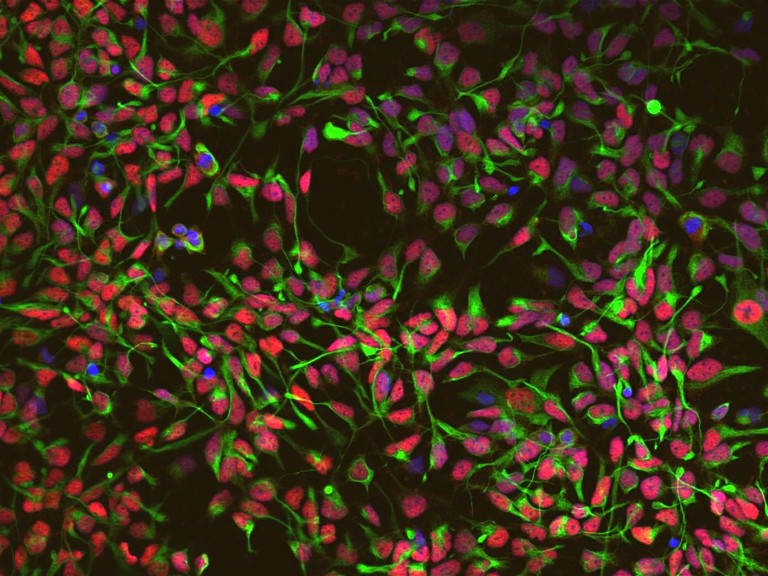New approach against chronic inflammation
Researchers at the University of Bonn are treating mice with so-called “nanobodies”
Researchers at the Universities of Bonn and Sao Paulo have succeeded in mitigating chronic inflammation in mice using customized “mini-antibodies.” These nanobodies enabled them to dissolve molecular complexes in tissue that normally activate the immune system. The nanobodies produced may in future help to slow down unwanted inflammatory reactions that cause diseases such as arthritis or neurodegeneration. The study is published in the journal EMBO Molecular Medicine.
Not only the villas of the rich and famous have a direct line to the police. The cells in our body also have a sophisticated alarm system, the inflammasome. Its central component is the so-called ASC protein. In the event of danger, such as an attack by a pathogen, many of these molecules join together to form a large complex, the ASC speck. This ensures two things: First, its activity causes the cell to accumulate large quantities of messenger substances, which can be used to summon the help of the immune system. And secondly, numerous pores are formed in the cell membrane through which these alarm molecules can reach the outside and fulfill their task.
These holes ultimately lead to the demise of the cell: “At some point, the cell basically explodes and empties its entire contents into the tissue,” explains Prof. Dr. Bernardo Franklin of the Institute of Innate Immunity at the University Hospital Bonn. “The messenger substances that are now abruptly released then act like a last great cry for help. This triggers the immune system to mount a strong inflammatory response that contains the infection.” That is why this mechanism of innate immune defense is hugely important.
However, in this process, ASC specks also accumulate in the tissue and may persist there for a long time. “We have now been able to show in mice that their activity activates the immune system even after the threat has been averted,” Franklin says. “This can result in chronic inflammation, which severely damages the tissue.” Together with researchers from the University of Sao Paulo, Franklin’s team has succeeded in preventing this undesirable effect. They used so-called nanobodies for this purpose.
These agents are antibody fragments with a very simple structure. “In collaboration with Prof. Dr. Florian Schmidt from the Institute of Innate Immunity, we generated nanobodies that specifically target ASC and can dissolve the specks,” explains Franklin’s collaborator Dr. Damien Bertheloot. The researchers got help from an alpaca: They injected the animal with the ASC protein so that it developed matching antibodies. Some of the alpaca antibodies have a very simple structure. This makes it possible to produce and test fragments of these antibodies as so-called nanobodies. […]
Participating Core Facilities: The authors acknowledge the support from the Microscopy, Nanobodies, and Flow Cytometry Core Facilities.
Participating institutions and funding:
The Institute of Innate Immunity and the Nanobody Core Facility at the University Hospital Bonn were involved in the study. Partners on the part of the University of Sao Paulo were the Center for the Study of Inflammatory Diseases and the Department of Pharmacology.
Publication: D. Bertheloot et al.: Nanobodies dismantle post-pyroptotic ASC specks and counteract inflammation in vivo; EMBO Molecular Medicine; DOI: https://doi.org/10.15252/emmm.202115415







